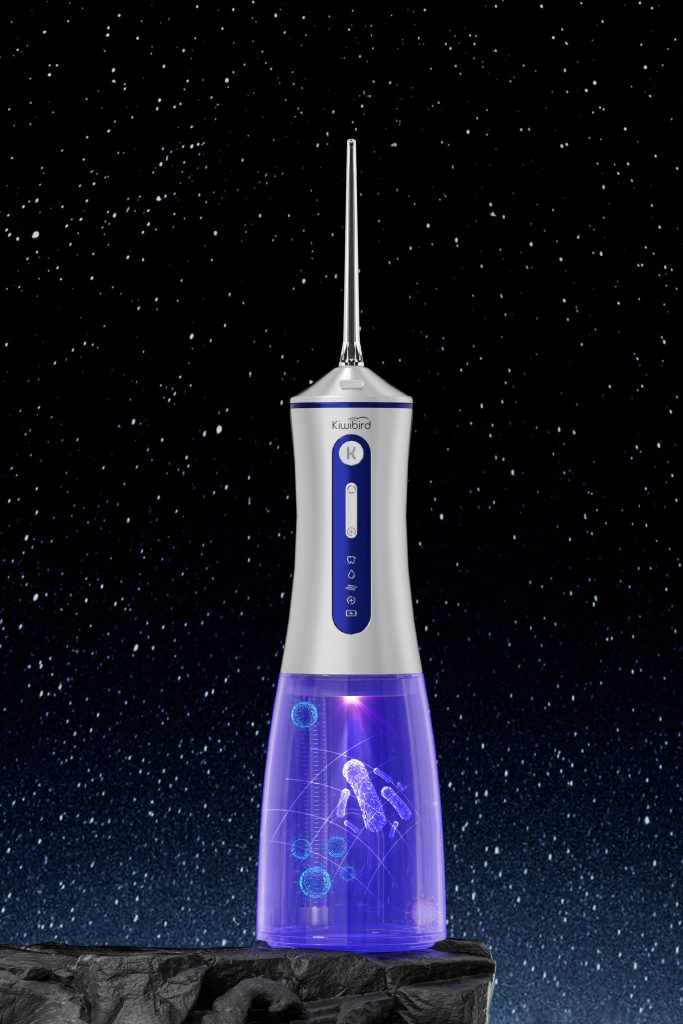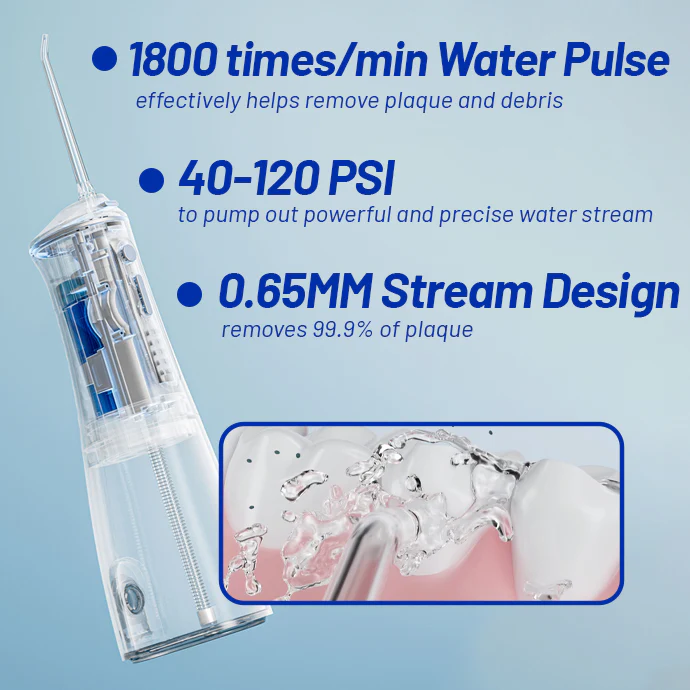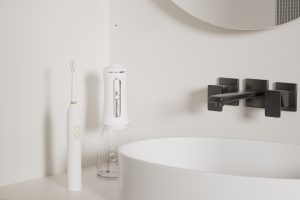Water flossers are essential tools for maintaining oral hygiene, but they can develop mildew if not cleaned properly. Mold and mildew thrive in moist environments, making your water flosser a potential breeding ground if neglected. Here’s a step-by-step guide to effectively remove mildew and prevent future growth.
1. Baking Soda Water Cleaning (Natural & Gentle)
A simple yet effective way to tackle mildew is by using baking soda water cleaning. Mix one teaspoon of baking soda with warm water and fill the reservoir. Run the flosser for a minute to allow the solution to clean the internal tubing. Baking soda is mildly abrasive and helps break down mold residues without damaging the device.

2. Denture Cleaning Tablets for Deep Chemical Cleaning
For stubborn mildew, denture cleaning tablets or effervescent tablets offer a powerful chemical cleaning solution. Drop one tablet into the water reservoir, let it dissolve, and run the flosser for a full cycle. The effervescent action helps remove hidden mold and bacteria while deodorizing the system.
3. Physical Cleaning with Rice (For Nozzles & Small Parts)
If mildew accumulates in hard-to-reach areas like the nozzle, try physical cleaning of rice. Fill the reservoir with warm water and a handful of uncooked rice, then shake vigorously. The abrasive texture of rice helps scrub away mold deposits without scratching delicate components.
4. Regular Drying to Prevent Mold Growth
After each use, empty the water tank and detach removable parts to air-dry completely. Preventing mold starts with eliminating excess moisture—store your flosser in a dry, well-ventilated area instead of leaving it in a damp bathroom.
5. Weekly Vinegar Rinse (For Ongoing Maintenance)
A monthly rinse with white vinegar (diluted 1:1 with water) helps disinfect the flosser and inhibit mildew. Run the solution through the device, then flush with clean water to remove any lingering odor.
6. Replace Filters & Check Seals Regularly
Old filters and worn-out seals can trap moisture, encouraging mildew. Replace filters as recommended by the manufacturer and inspect seals for cracks to ensure a watertight system.
Final Thoughts
By combining baking soda water cleaning, denture cleaning tablets, and physical cleaning of rice, you can keep your water flosser mold-free. Remember, preventing mold is easier than removing it—adopt these habits to ensure your device stays clean and hygienic for long-term use.
For more B2B dental care maintenance tips, explore our blog or contact us for professional solutions! https://www.powsmart.com/simples/x3-portable-uv-water-flosser/





